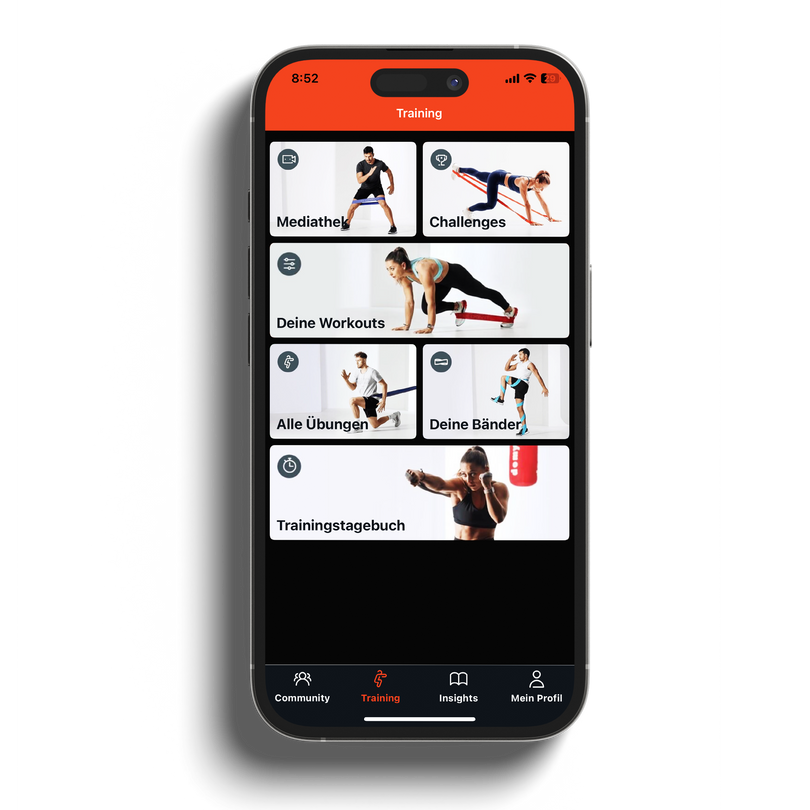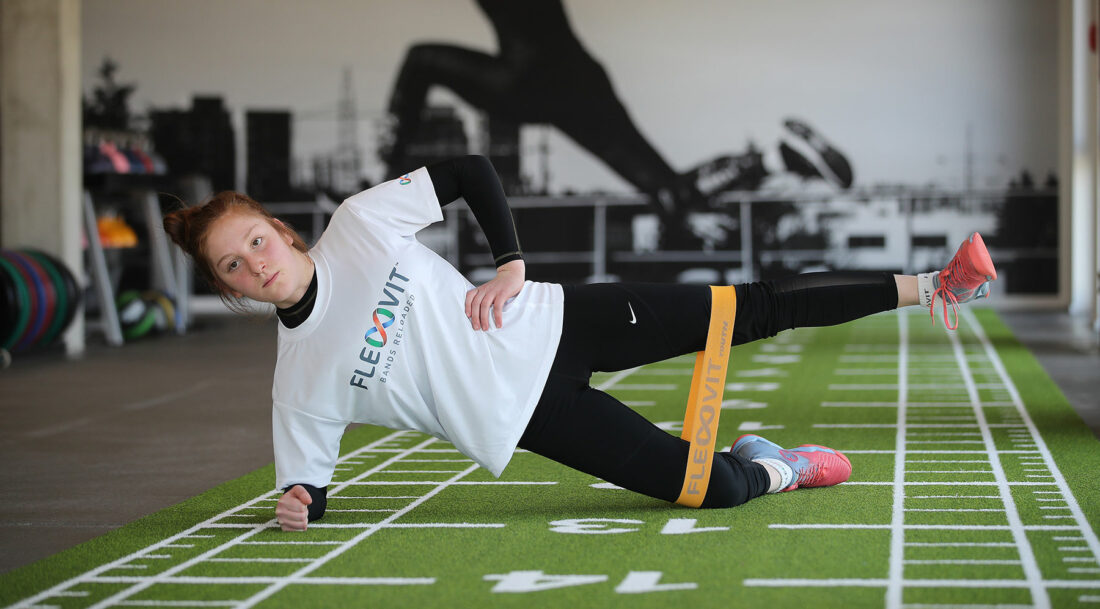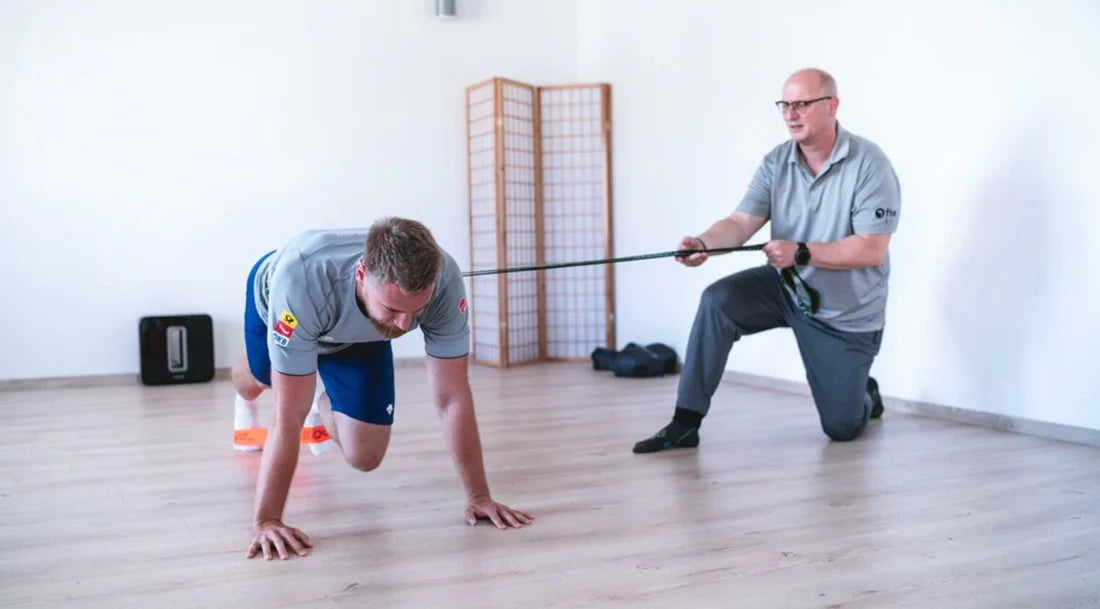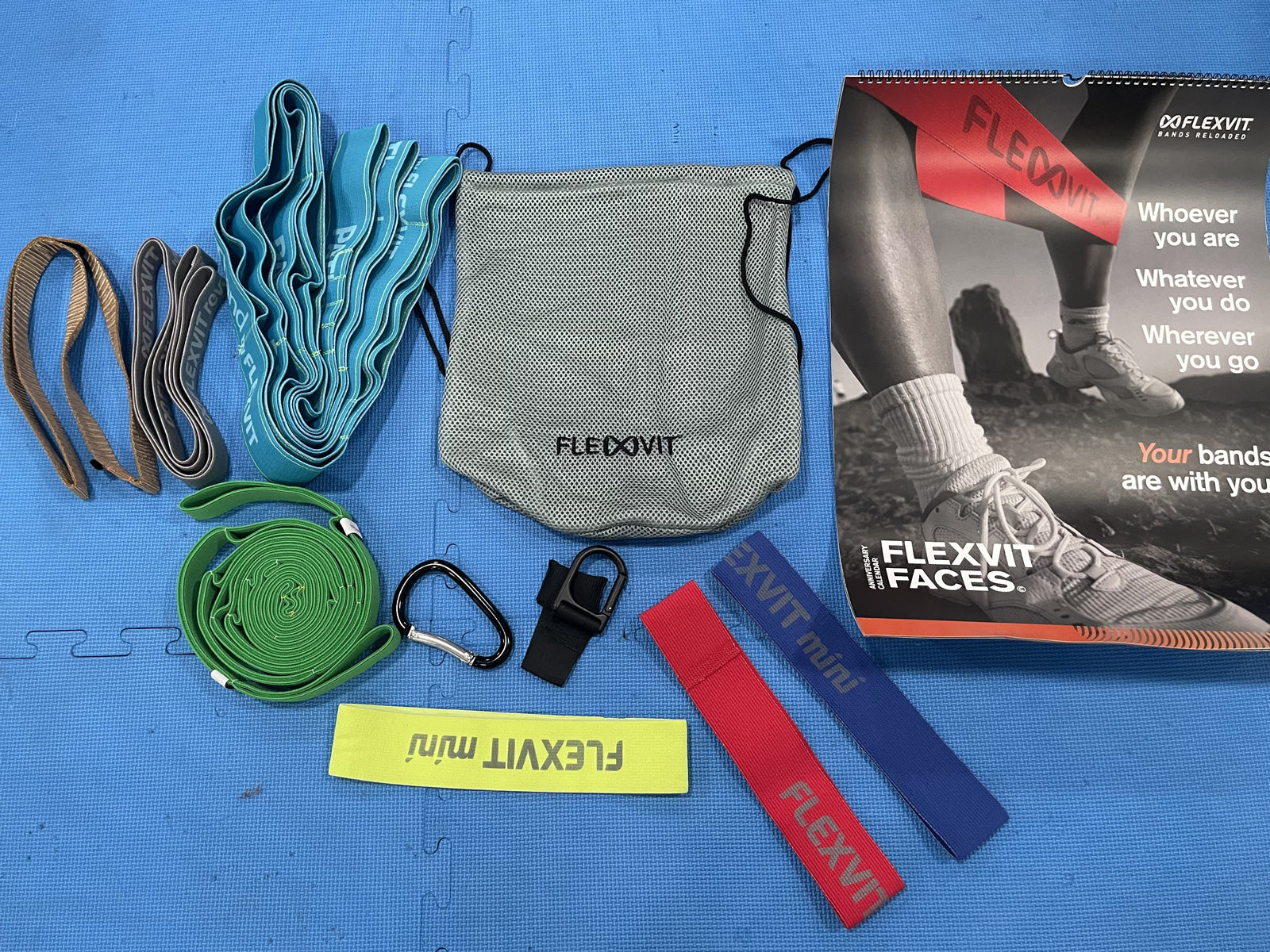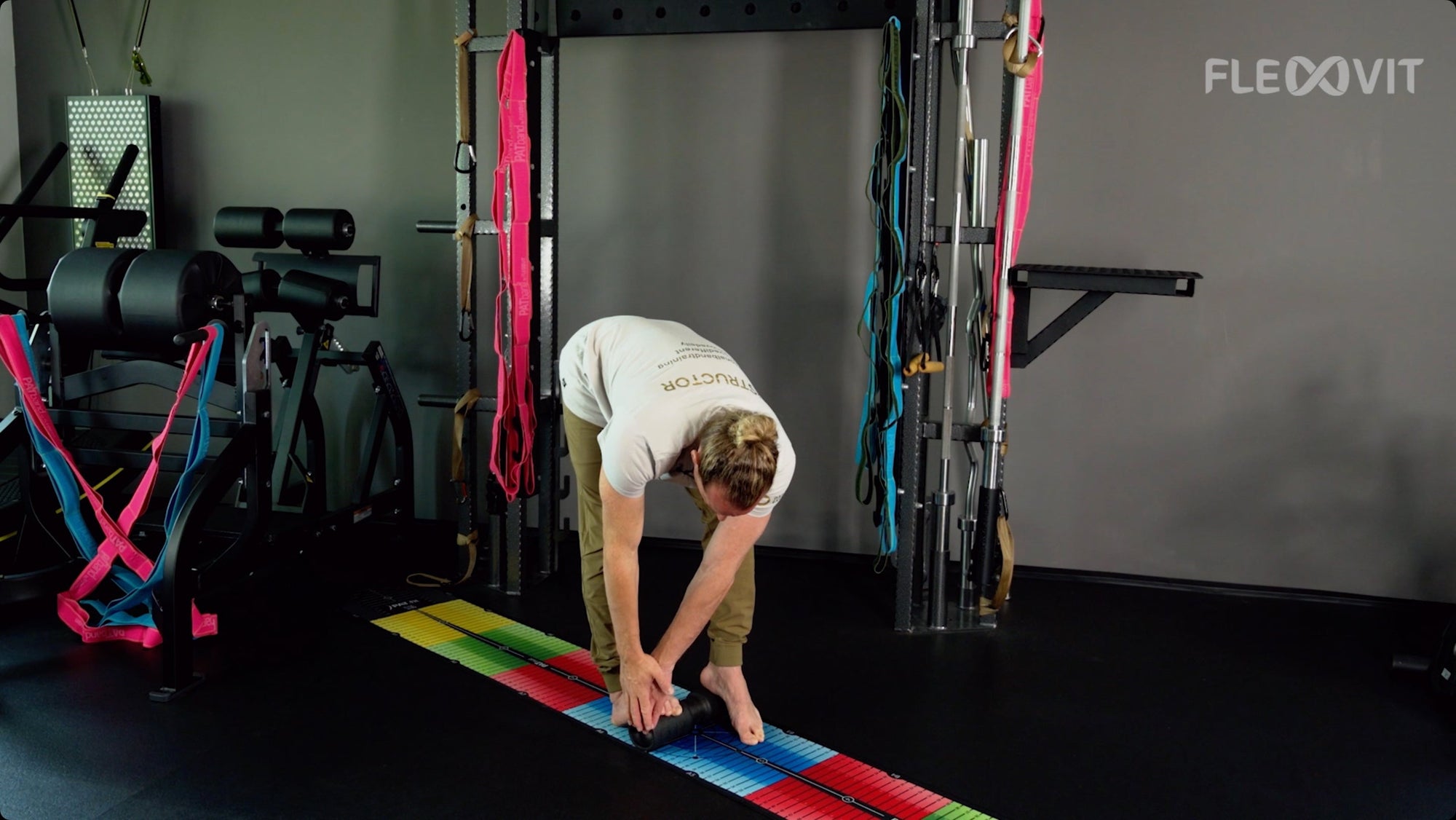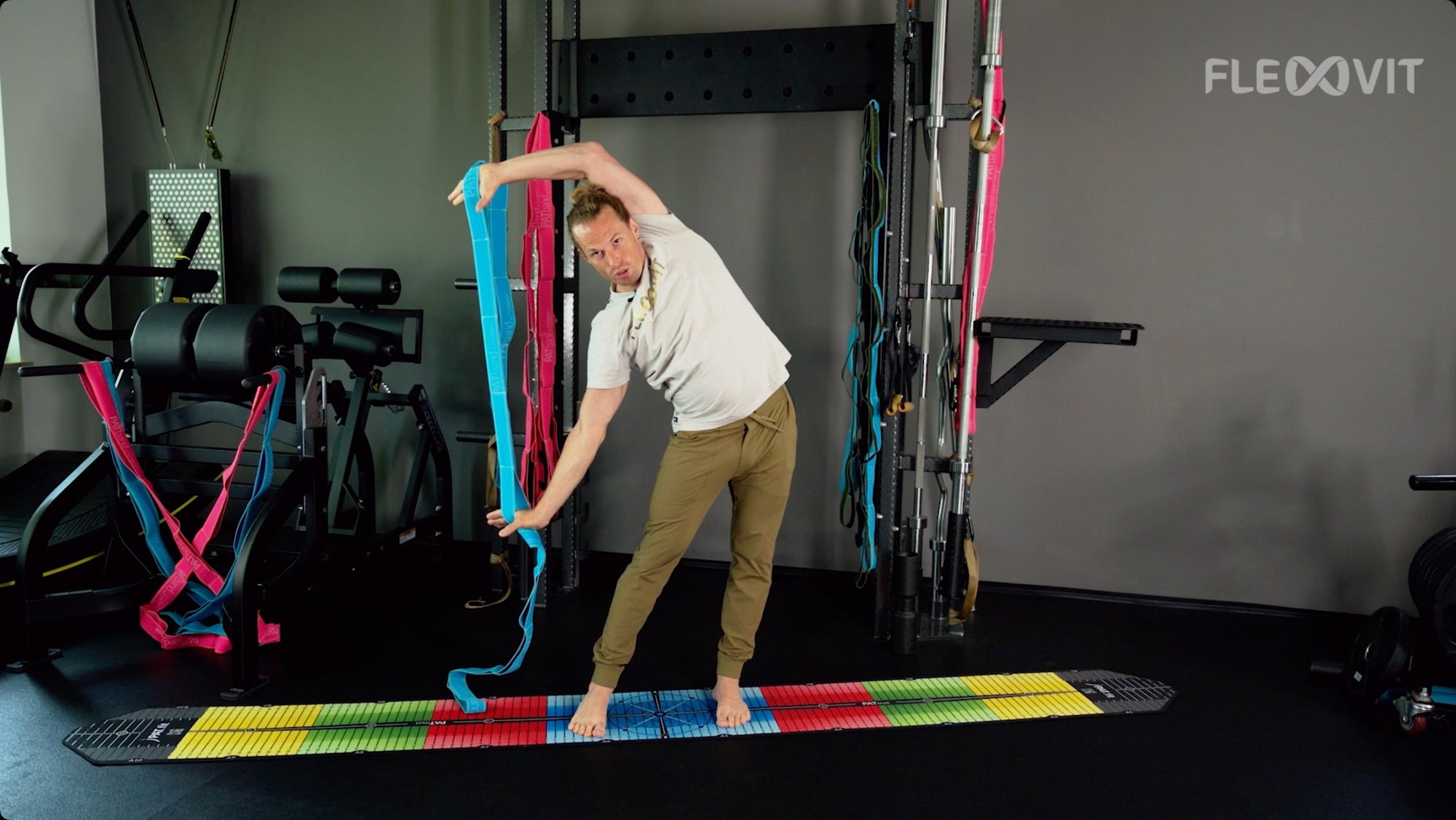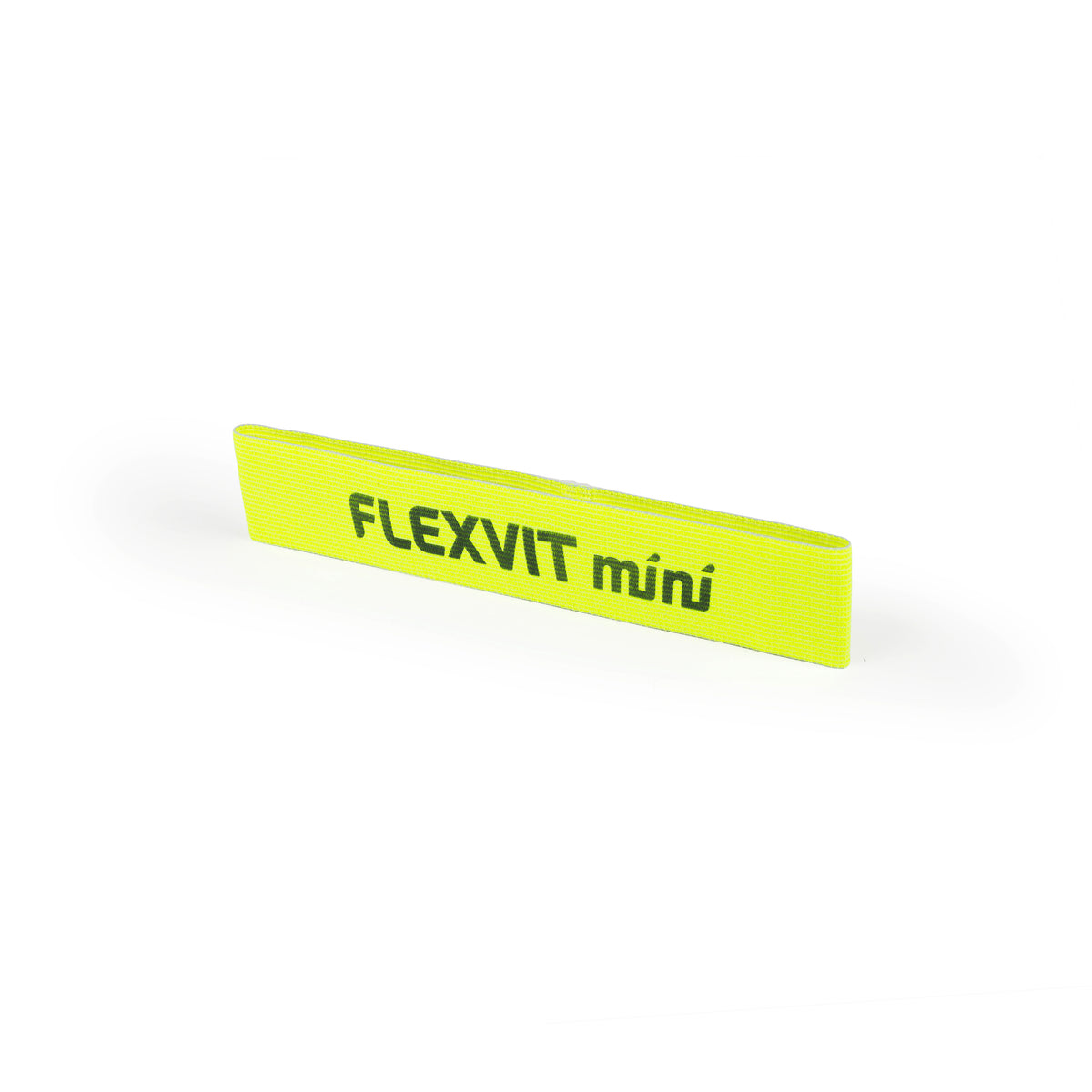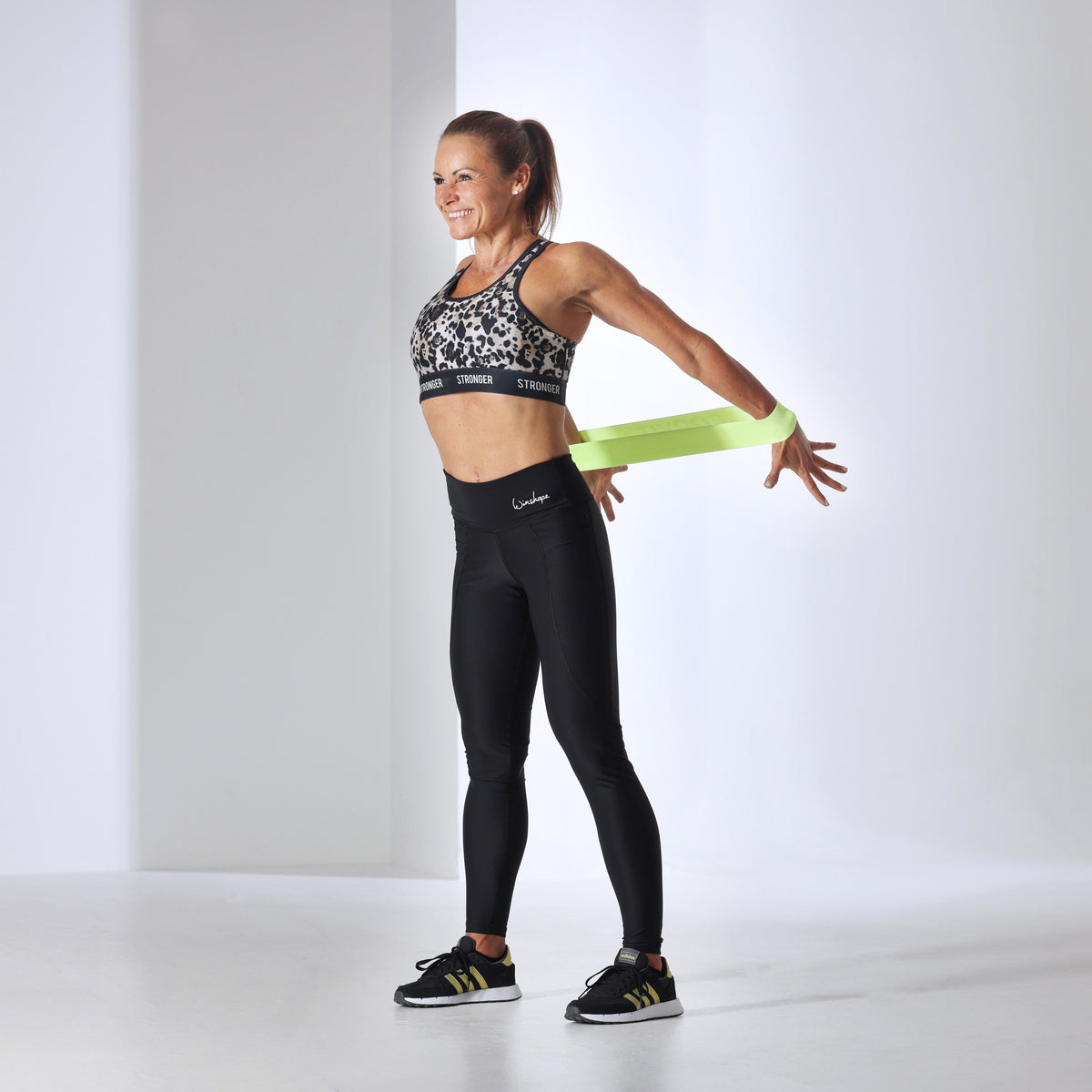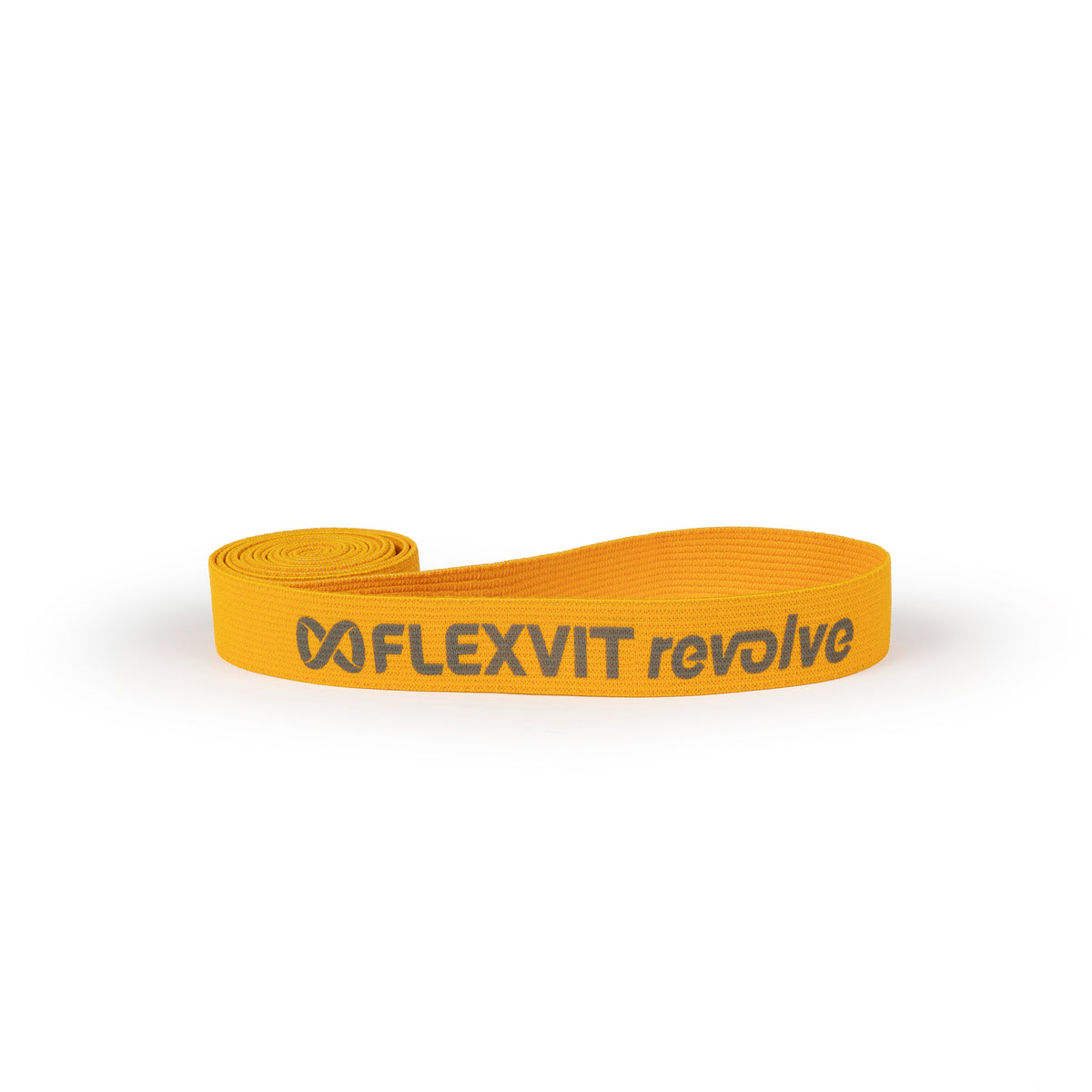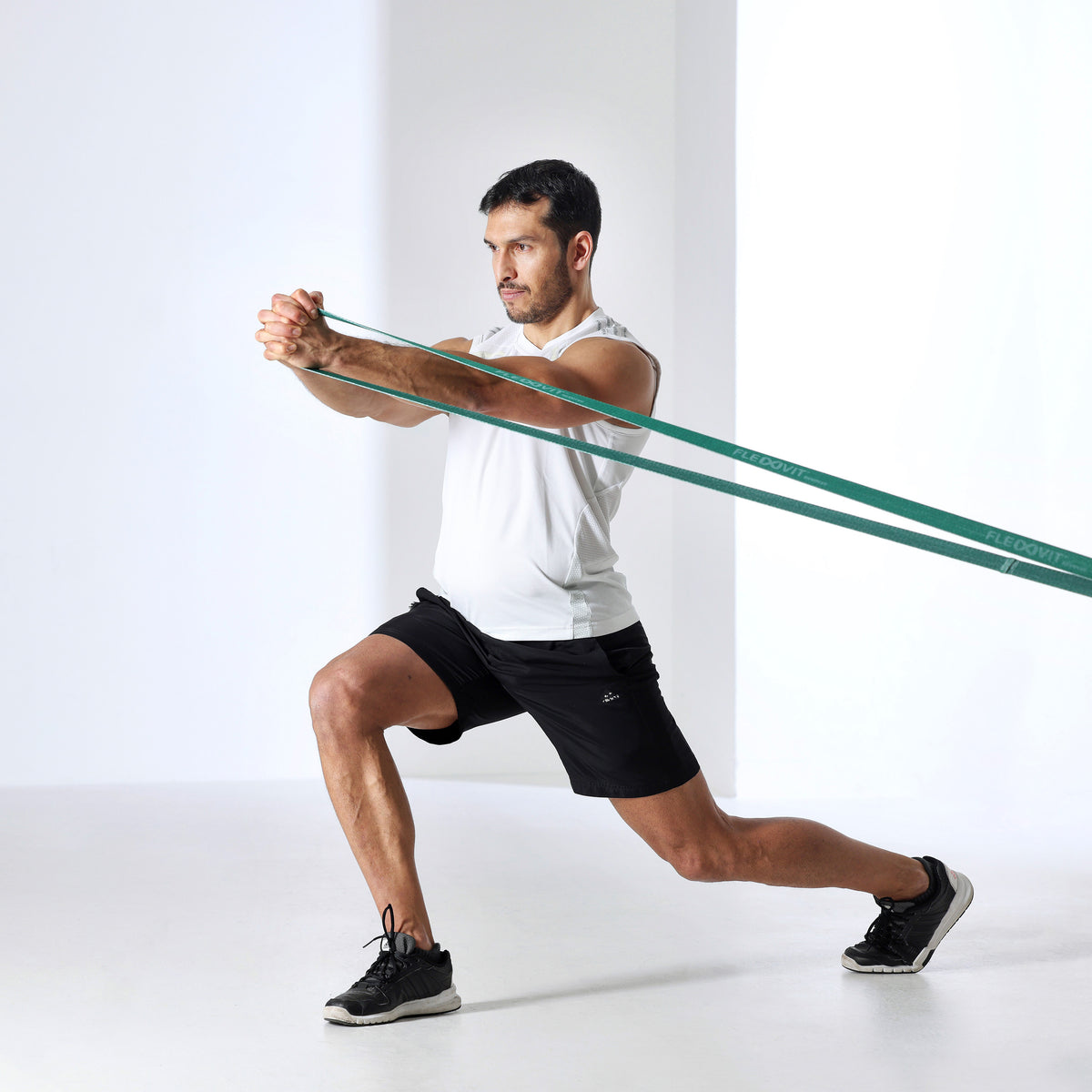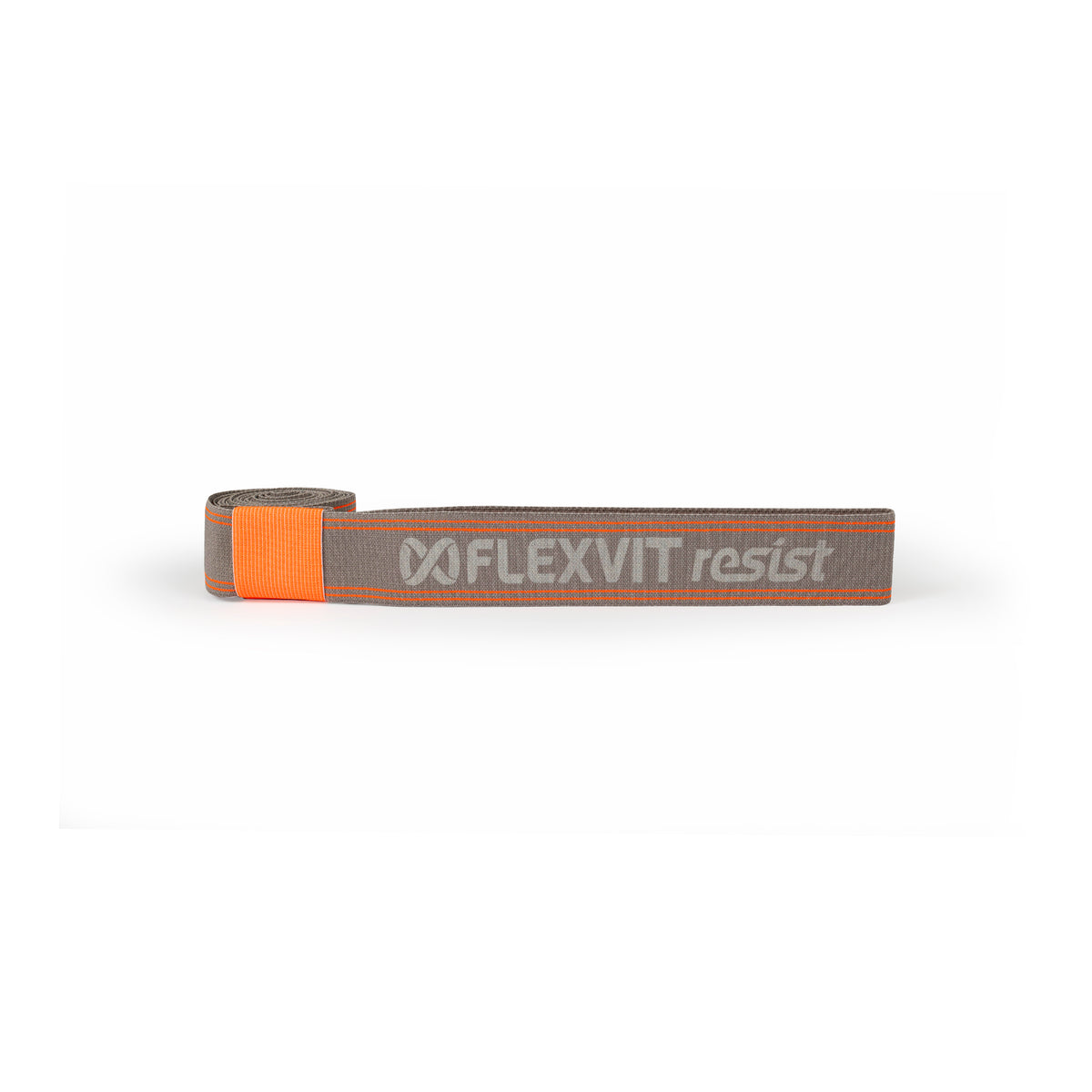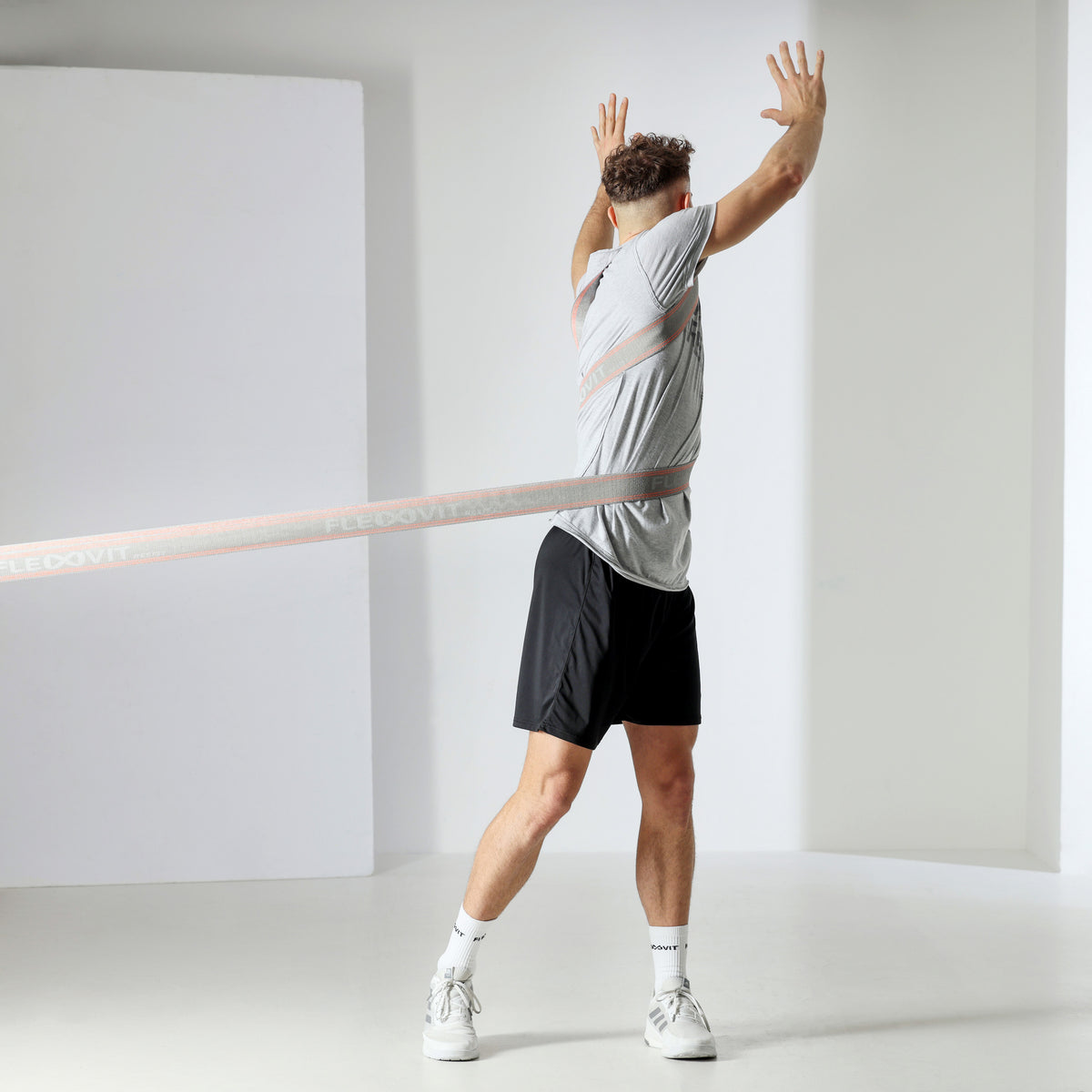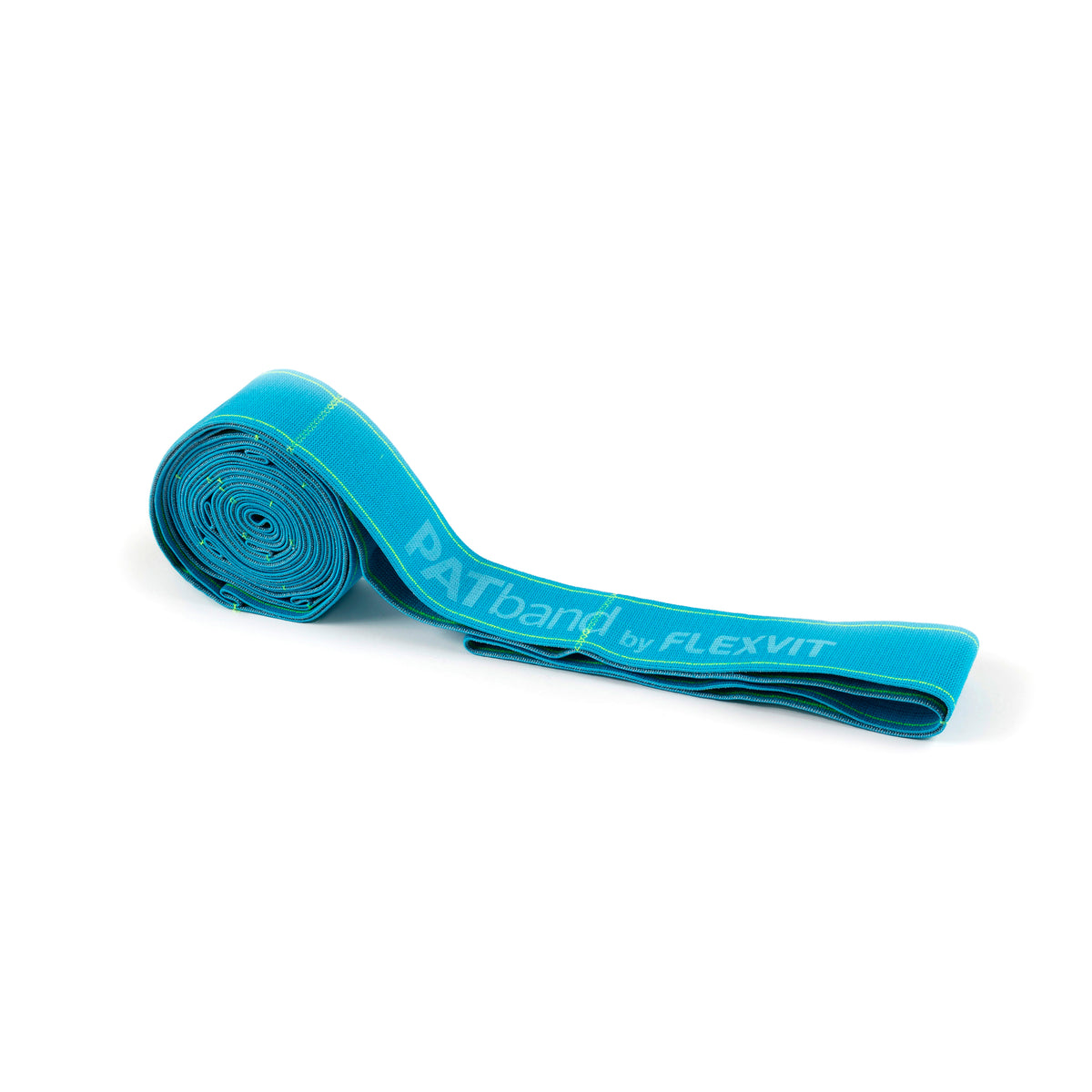Resistance bands as a basis for stability and mobility in cycling
The main focus of the off-season should not be purely on numerous basic kilometers. After all, the number of kilometers in question does not necessarily correlate with the desired athletic output. When structuring a new season, athletic training and functional racing bike training play a central role. In principle, the body should be prepared for a new, intensive competition season. What good is the best training program if you can't implement it long-term? In the worst case, inflammation and injuries occur, which in turn force us to take a break. However, they can be prevented through functional cycling training.
Improving overall stability through movement control
Athletic training should always be as specific as possible. The role that correct movement plays is often neglected, especially among amateur athletes. Ultimately, cycling is by no means our natural form of exercise. For example, the hip flexors or the front side of the thigh are stressed significantly more than the back of the leg. These imbalances are inevitably reflected in our movement pattern. Endurance athletes in particular therefore tend to have excessive muscle tone. However, it is not just about fighting the onset of tiredness as vigorously or as long as possible. The body should be seen much more as a chain of movements. If we shorten individual muscles, we remain far below our potential. If we don't train a muscle to its full extent, this has a long-term impact. Therefore we need sufficient mobility. We can improve this through functional racing bike training.
Leg axis stability in cycling
Functional training with resistance bands offers enormous potential for increasing individual performance. For example, stabilizers can be strengthened in isolation during core training for cyclists. Our hips, ankles and knees can be perfectly activated and correctly positioned during functional racing bike training with the support of the FLEXVIT mini bands. Resistance bands enable quick, noticeable improvement through strength training on a racing bike and a reduction in the risk of injury. Overloading in cycling is largely associated with incorrect control. A monotonous movement sequence between the left and right leg can have serious consequences if individual components do not work together properly. An economical step places little strain on the joints and must therefore be given top priority. Consequently, balanced strength training is essential in cycling.
Advantages of functional road bike training with bands
Our knee joints, for example, need freedom of movement in order to work correctly. This should not only be taken into account when positioning the petal cleats on the bike, but especially in functional racing bike training. This aspect can be excellently coached with resistance bands such as the FLEXVIT Resist or the PATband. In functional cycling training we can move without restrictions and at the same time take advantage of the resistance. Resistance bands allow movement control in terms of coordination. They also leave room for rotation, which in turn is not always sufficient in machines. During functional training with bands, we can specifically avoid uneven pressure distribution because our joints can work freely in three-dimensional space.
Flexibility through resistance training
Functional symmetry is essential in the loading characteristics. Here, both as an athlete and as a cycling coach, it is important to take the ascending and descending cause-effect chains into account. After all, misalignments and functional deficits are always accompanied by problems. The focus in this regard is on the leg axis. The cyclist's leg axis is the imaginary line from the hip to the second/third toe. Overall, functional racing bike training is about “cataloging” the respective target sport. Which levels do I claim? Which areas do I need to stabilize? Which areas should be mobilized? In my opinion, the area of mobilization is often neglected in cycling. The aim should be to optimally load structures such as ankles, knees and hips. Resistance bands allow me to economize the target sport through functional feedback. Problems arise, for example, when the knees collapse too much inwards or outwards. There is then a serious loss of strength within the leg axis. But we can ideally train this with resistance bands. Areas such as the hips, ankles, knees and also our shoulder girdle should be trained sustainably. The FLEXVIT Chain can also serve as a perfect tool, especially in the upper body.
Exercises for cyclists with resistance bands
Resistance bands can be used to perform many exercises to strengthen the leg, hip and core muscles that are important for cyclists. Exercises with the FLEXVIT Resist or the FLEXVIT Mini can also help to correct imbalances and thus prevent injuries.
Exercises for more leg axis stability
All exercises in a one-legged stance promote leg axis stability and at the same time challenge balance. With a mini band as additional resistance, additional strengthening elements can be incorporated into such exercises. The mini band can also serve as a selective stimulus that, for example, helps to correct certain imbalances or posture problems.
Leg raises in a one-legged stand with the mini band
- Place the mini band just above the ankles. Stand on one leg. You can put your hands on your hips.
- Now move the other leg forward, to the side and back without putting it down. Maintain your balance while standing on one leg.
- Do a few repetitions and then repeat the exercise with the other leg.
Squats with the mini band
- Position the mini band above your knees. Start with your feet hip-width or slightly more than hip-width apart - the mini band should be slightly stretched.
- Now bend your knees so that your thighs are at least horizontal or lower, and push your buttocks back. Your shoulders and knees should be in a vertical line above the tips of your feet, your back should be straight or your spine should be in its natural double S shape (not a hunched back, but not an extreme hollow back either).
- Then come back to an upright position. At the end of the movement, actively push your hips forward and at the same time bring your arms back alongside your body.
You can find more exercises with FLEXVIT bands on YouTube .
About the author 
Mag. Stephan Kohlhauser MA.
I am particularly concerned with innovative training concepts in the sports: triathlon, swimming, cycling and ultra-running. Through my coaching and my own athletic training, I love to keep my finger on the pulse of functional training. As a multiple triathlon participant and ultra runner, I combine theory with practical knowledge. My main job is to look after people with mental and physical disabilities.

